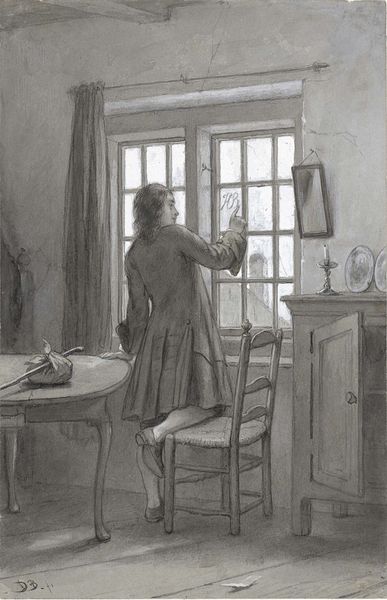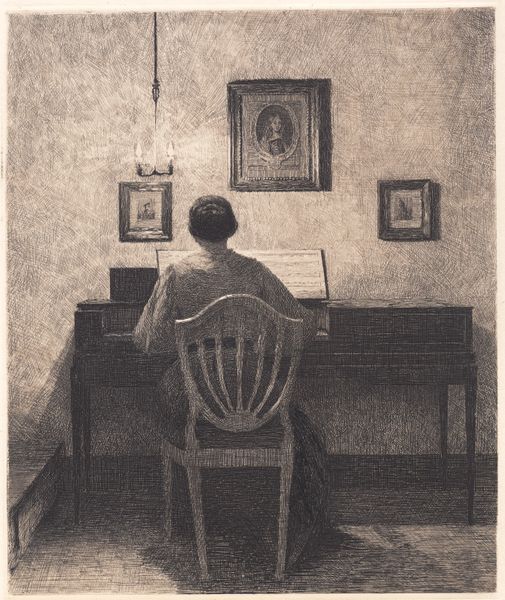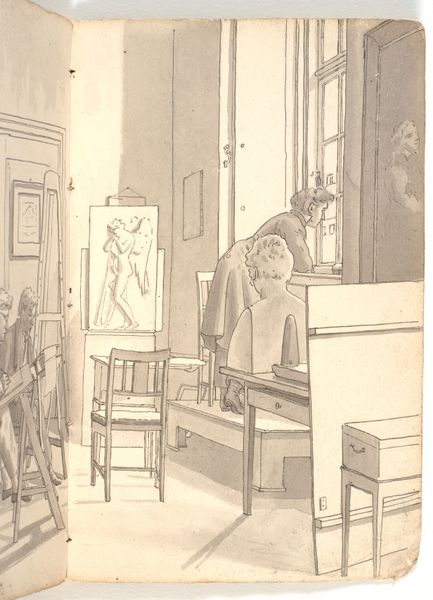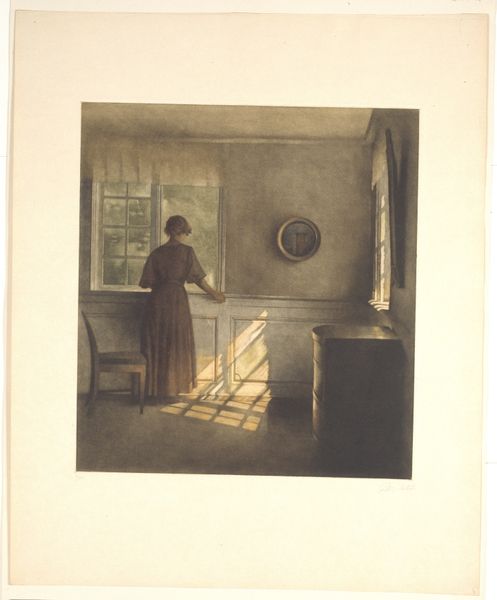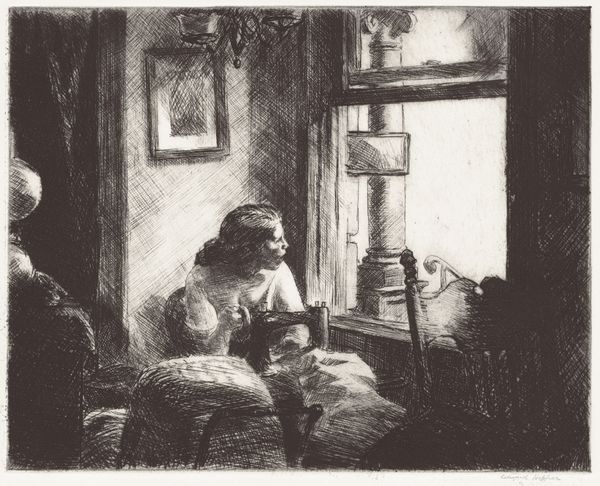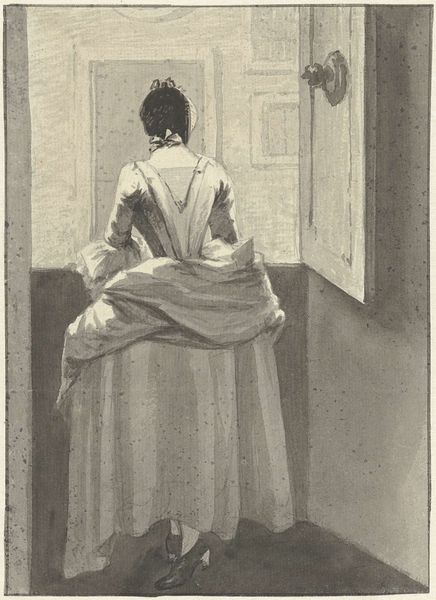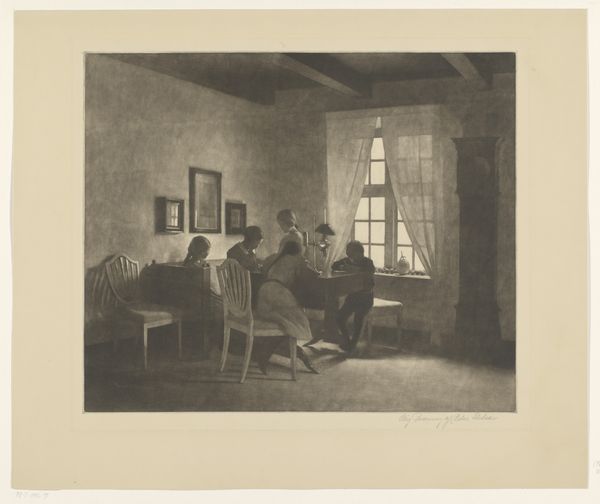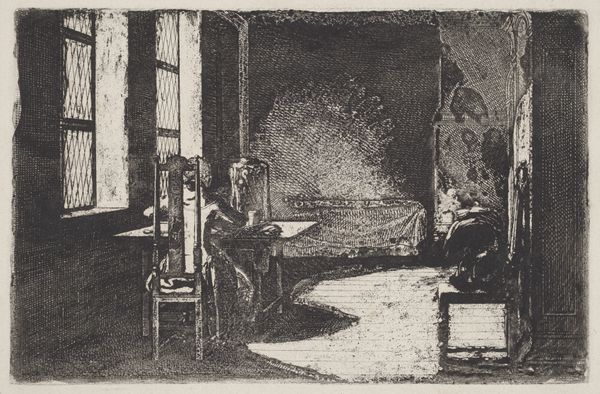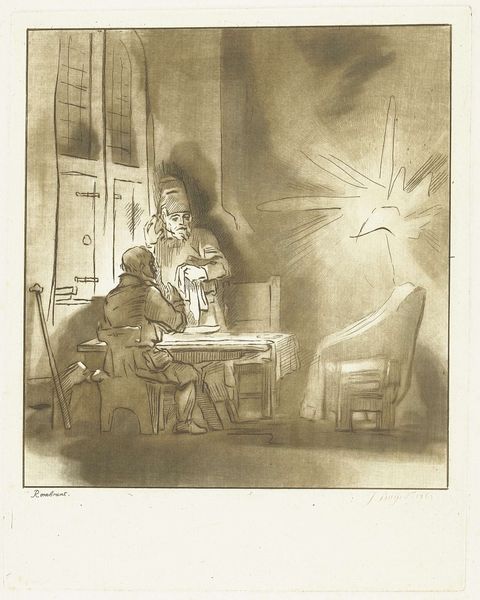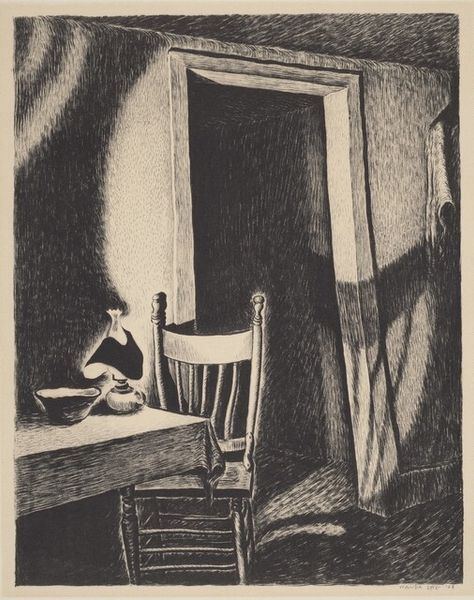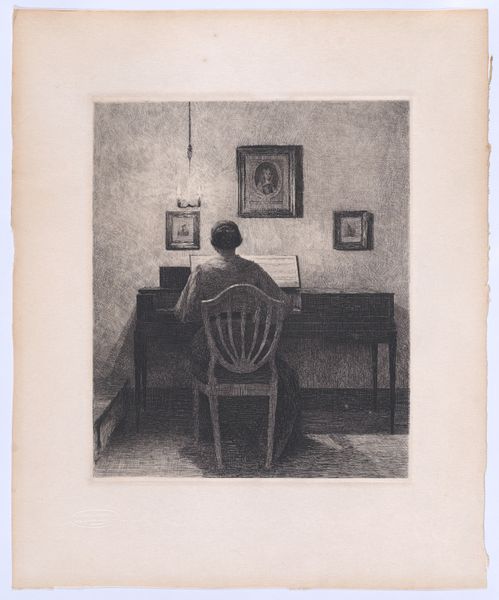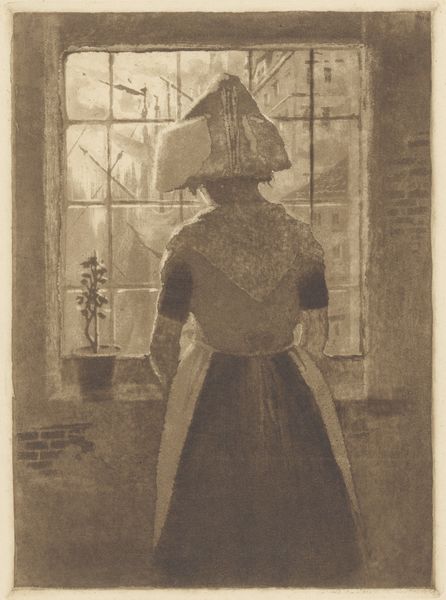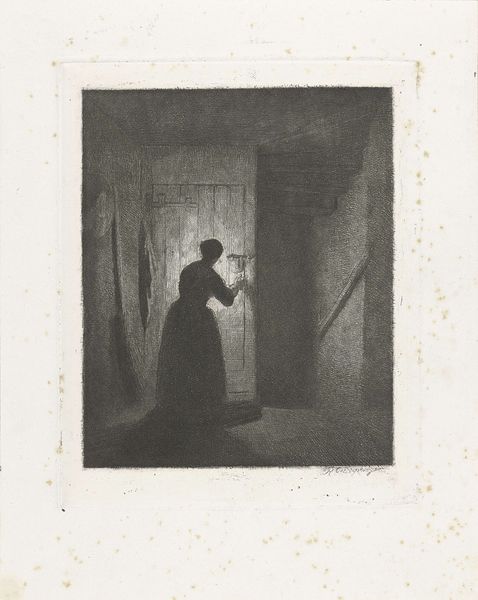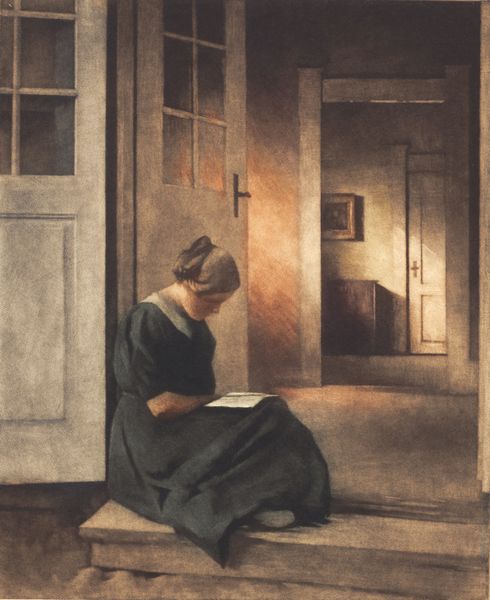
Dimensions: 340 mm (height) x 276 mm (width) (plademaal)
Curator: Looking at "Solskin," or "Sunshine," a 1909 mezzotint by Peter Ilsted, housed at the SMK, the eye is immediately drawn to the way light shapes the scene. What strikes you initially about it? Editor: The quiet intimacy is powerful. A woman sits with her back to us, sunlight dramatically illuminating a simple room. There's a distinct stillness; it feels like a sanctuary from a busy world. Curator: Absolutely. The symbolic weight of light is central here. In art, light often represents enlightenment, hope, even divine presence. It is worth considering what traditions of domestic interiors and imagery Ilsted might be referencing? Editor: Yes, but I wonder too, about the historical context. 1909 was a time of significant social change. Women’s roles were shifting. Could this scene be interpreted as offering a view of domesticity that feels both comforting and perhaps… a little restrictive? The strong shadows also lend a touch of melancholy. Curator: That’s a very pertinent question, yes. Certainly, the contrast between the bright sunlight and those very heavy shadows does set up a compelling symbolic tension. The circular framed object could be a mirror— a classical vanitas motif, referencing time and mortality —hinting at both self-reflection and confinement. It asks what choices were available to women then, who perhaps found both refuge and restriction within those sunlit walls. Editor: It highlights a broader conversation: the intersection of domesticity, visibility, and power. We see a figure rendered anonymous by the artist’s choices and historical gender conventions, situated inside the aestheticised comforts of bourgeois life, while still experiencing a muted alienation. How does that impact our reading of what sunlight or 'solskin' truly represents? Curator: Very interesting indeed. When we consider what it represents we can appreciate Ilsted’s exquisite rendering. Through the mezzotint technique, Ilsted achieves a tonal range that mimics the subtle gradations of light, almost palpable in the texture. Editor: Thank you, by prompting this intersectional analysis it allows for a dialogue between the aesthetic qualities and sociopolitical commentary of the image, challenging us to reflect critically on both historical conventions and continued issues of representation and social roles. Curator: Well said; a powerful work inviting multiple levels of contemplation.
Comments
No comments
Be the first to comment and join the conversation on the ultimate creative platform.
